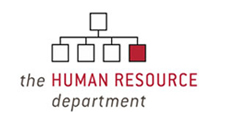Pay Practices for 2011 - and Beyond
Sometimes there's no going back. I smiled when I read "You're Out: 20 Things That Became Obsolete This Decade" in The Huffington Post. I'm not certain if my smile was one of nostalgia or simply one of acknowledgement that I am, as one of my favorite Simon & Garfunkel songs says, "Older than I once was, but younger than I'll be." What I do know is that there was at least one thing they forgot to add to the list: the average 6% (sometimes more!) salary increase pool of the 1990s. Ahhhh... those were the days, my friend!
Base pay salary increase pools are projected to be 3.0% in 2011 (source: WorldatWork 2010-2011 Salary Budget Data). But historically, the actual increase pool typically falls a little short of the projected pool. In 2010, the actual came in around 2.7%, about 90% of the 3.0% that was projected for 2010.
The good news is that whereas base pay adjustment pools are declining, incentive opportunities as a percent of base pay have been on the rise. WorldatWork (in the Salary Budget Data report cited above) reported the following projected median variable pay opportunities for 2011:
But base pay, dare I say, is still king. Why? Because it's guaranteed. And if the base pay isn't right (choose your favorite synonym: competitive, fair, etc.), the upside potential of the variable piece is the carrot that very few will have the appetite to wait for.
So whether you've got 3.0% or something less, you're faced with a cultural and mathematical dilemma: how to slice a very small pie into enough pieces to feed the masses.
Here are some practical strategies for your salary increase process:
To my dismay, handwritten letters made the list of "20 Things That Became Obsolete This Decade." Let's make sure that the face-to-face conversation and the spoken thank-you don't meet the same fate.
Authored by Sandy Turba
Base pay salary increase pools are projected to be 3.0% in 2011 (source: WorldatWork 2010-2011 Salary Budget Data). But historically, the actual increase pool typically falls a little short of the projected pool. In 2010, the actual came in around 2.7%, about 90% of the 3.0% that was projected for 2010.
The good news is that whereas base pay adjustment pools are declining, incentive opportunities as a percent of base pay have been on the rise. WorldatWork (in the Salary Budget Data report cited above) reported the following projected median variable pay opportunities for 2011:
- Nonmanagement Hourly Nonunion: 5%
- Nonmanagement Salaried: 7%
- Management Salaried: 15%
- Officers/Executives: 30%
But base pay, dare I say, is still king. Why? Because it's guaranteed. And if the base pay isn't right (choose your favorite synonym: competitive, fair, etc.), the upside potential of the variable piece is the carrot that very few will have the appetite to wait for.
So whether you've got 3.0% or something less, you're faced with a cultural and mathematical dilemma: how to slice a very small pie into enough pieces to feed the masses.
Here are some practical strategies for your salary increase process:
- Benchmark key jobs against the market. If you haven't gauged your market-competitiveness in a while, and don't have time to take a wholesale look now, focus on a handful of jobs: those for which you've had difficulty recruiting; jobs where you've had excessive voluntary turnover; jobs where you have your high-potential or highest performing employees and jobs that require special, hard-to-find or hard-to-build skills. Make sure that your salary structure base pay levels are competitive with the market.
- Identify your high performers and most critical employees. If you use a ratings-based performance management process, that's one source of input. But don't rely on that alone. Consider feedback from managers, customers or other employees. Take a look at client feedback or satisfaction surveys, productivity metrics and service quality reports. Do a "gut" check. Who do other employees like working with and who do managers want working for them? Who are the people who are innovative, reliable, hardworking? Make sure their base pay is market-competitive.
- Acknowledge that treating people fairly does not mean that you need to treat them all equally. Or, put differently, if you attempt to give everyone something, you've diluted your ability to make some important impacts with your small salary budget. If you've got employees under the minimum of the range, begin to make some fixes. If you've got underperforming employees within the range, think hard about the message you're sending if you adjust their pay.
- Hold back 0.5% (or some small portion) of the budget to make other adjustments. Maybe you've got a top performer whose base is near the top of the range. Consider a lump sum instead of a base adjustment. Or use some of the funds to add to the adjustment for employees who are being promoted.
- Consider creating a Total Rewards Statement. These statements typically include base salary, any incentive paid in the previous year, the value of paid time off and employer contributions to benefits plans, retirement/savings plans and legally required taxes. Total Rewards Statements are a great tool for helping employees see the full value of their compensation and benefits. They're even more effective if they become part of a face-to-face conversation during the salary increase process.
- Talk to your employees. Thank them for a job well done. Ask them what they like about their job and the company. Listen to what they have to say.
To my dismay, handwritten letters made the list of "20 Things That Became Obsolete This Decade." Let's make sure that the face-to-face conversation and the spoken thank-you don't meet the same fate.
Authored by Sandy Turba
Labels: incentive pay, pay adjustments, pay trends 2011, salary increase budgets


